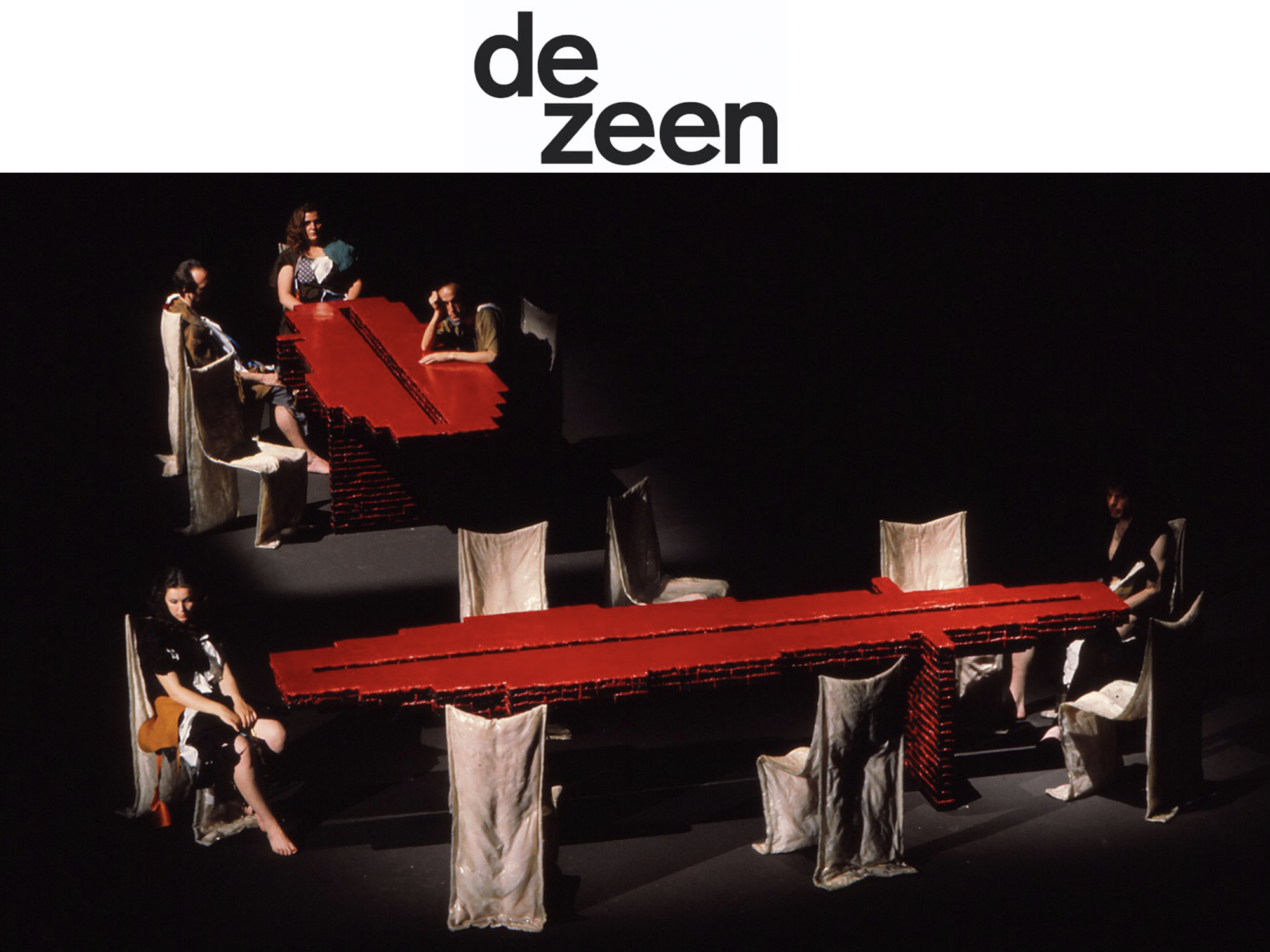By Benedict Hobson
Gaetano Pesce implores young designers to consider how to address social issues through their work, which he says has a greater capacity to communicate with people than art, in our latest collaboration with Friedman Benda for VDF.
“Design is a tool, not just to make nice things in a very decorative way,” the Italian architect and designer told curator Glenn Adamson in the latest of New York gallery Friedman Benda’s Design in Dialogue interviews that we are publishing as part of Virtual Design Festival.
“Design is much more complex than that. Design is a very powerful form of communication, a very important form of expression. In my opinion, it is an art.”
“Young designers have to understand they are practising something that is an art, and maybe better than art,” he continued.
“Because art goes to the gallery, goes to the museum. But design goes to families. Objects stay inside the family and people are in contact with them every minute of the day. That is very, very powerful.”
Pesce’s Up chairs for B&B Italia were his “first figurative expressions”
Pesce made the comments ahead of a presentation exploring some of his most influential design projects from the late 1960s through to the early 1990s.
Pesce imbued many of these projects with religious meaning or political commentary, such as his iconic 1969 Up series of chairs for Italian furniture brand B&B Italia, which was at the time called C&B Italia.
The most famous pieces in the series, which caused controversy at Milan design week last year when outsized versions were installed in front of the Duomo, are the Up5 chair and Up6 ottoman.
The latter is attached to the former with a cord, which Pesce intended to represent the lack of freedom of women in society by evoking the image of a ball and chain.
“It was, for me, one of my first figurative expressions,” Pesce said. “For me, what is most important is the representation of the woman without freedom, which is very visible unfortunately in a lot of countries in the world.”
Golgotha table and chairs are “a very good example of what design can express”
Pesce also discussed his Golgotha table and chairs, which he designed in 1972 for Bracciodiferro, an experimental subdivision of Cassina, which he founded with fellow designer Alessandro Mendini.
The table, which has a crucifix form when viewed from above, is made from wood blocks bonded together using a red polyester resin.
The table was constructed upside-down, so that the drips of red resin from between the wood blocks travel upwards when the table is installed, seemingly in defiance of gravity.
“That is a representation of the resurrection,” said Pesce. “In my opinion, this is one of the strongest objects I have made. I made this story because I believe design, as an artistic expression, can talk about different concepts and also about religion.”
Along with the table, Pesce designed a series of chairs made from sheets of fibreglass cloth and Dacron – a synthetic polyester material that is wrapped around foam furniture before it is upholstered. Pesce draped the resin-soaked material over moulds, which hardened to create rigid chairs.
According to Pesce, the chairs reference the linen burial shroud Jesus is said to have been wrapped in after he was crucified.
“Altogether, this is a very good example of what design can express,” Pesce said. ]
“Sure, you can eat from that table, sure you can draw, you can work using the table. But there is also something very important that design can do, which is the meaning.”
Pesce’s Pratt chairs are “a simplification of art and design”
Pesce would continue to experiment with resins throughout his career, such as with his 1984 Pratt Chair project, a series of nine experimental chairs made from urethane resin.
Pesce adjusted the density of the resin in the chairs, with each chair in the series being sturdier than the one before it. The first chair could not even support its own weight and collapsed as soon as it was removed from its mould. But from the fourth version onwards the chairs could support the weight of a person, becoming sturdier and more functional with each iteration.
According to Pesce, the project aimed to explore the overlapping relationship between art and design.
“This is a very good simplification of art and design,” he said. “When the formula changes, we either create art or an object of design. An object can be art, depending on the chemical formula, or it can be a design object.”
It is design’s relationship to art that Pesce believes younger designers have lost sight of due to a preoccupation with abstract form and decoration.
“Design today is a very powerful way to communicate, that can allow people to talk about the important issues, whether political, religious or philosophical,” Pesce said. “This is what I would like to tell your audience.”
Design in Dialogue
Pesce’s conversation with Adamson is the sixth in a series of Friedman Benda’s Design in Dialogue talks we are broadcasting as part of Virtual Design Festival throughout May and June.
Previous interviews in the series we have published include conversations with pioneering architect James Wines, who lamented the predominance of digitally created forms in architecture, and designer Faye Toogood, who revealed she suffers from imposter syndrome.
Ron Arad told Adamson that “business is always a necessary evil”, Stephen Burks discussed the lack of diversity in the design industry and Joris Laarman discussed the “magic” of digital technology in previous talks in the series that we have published.










